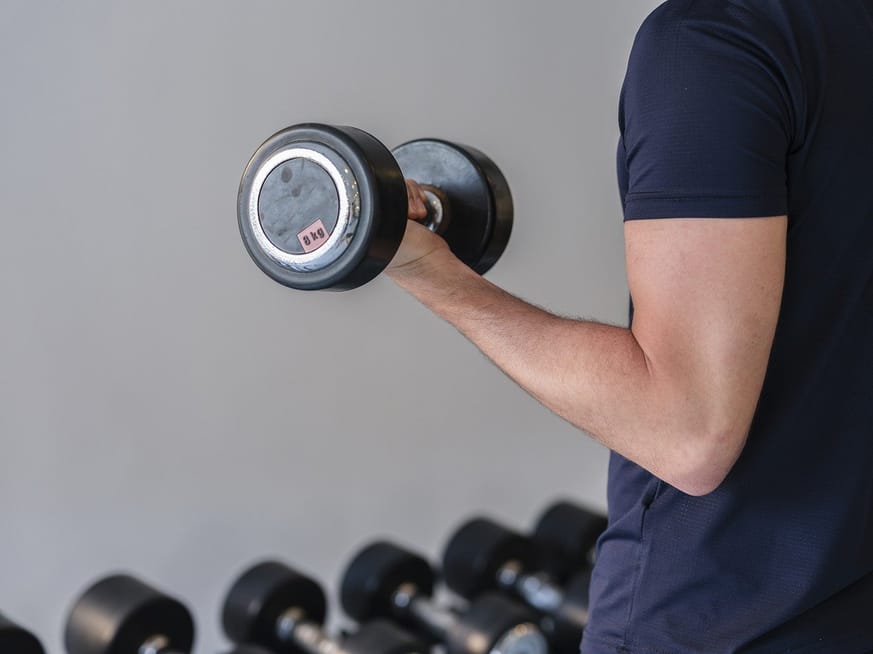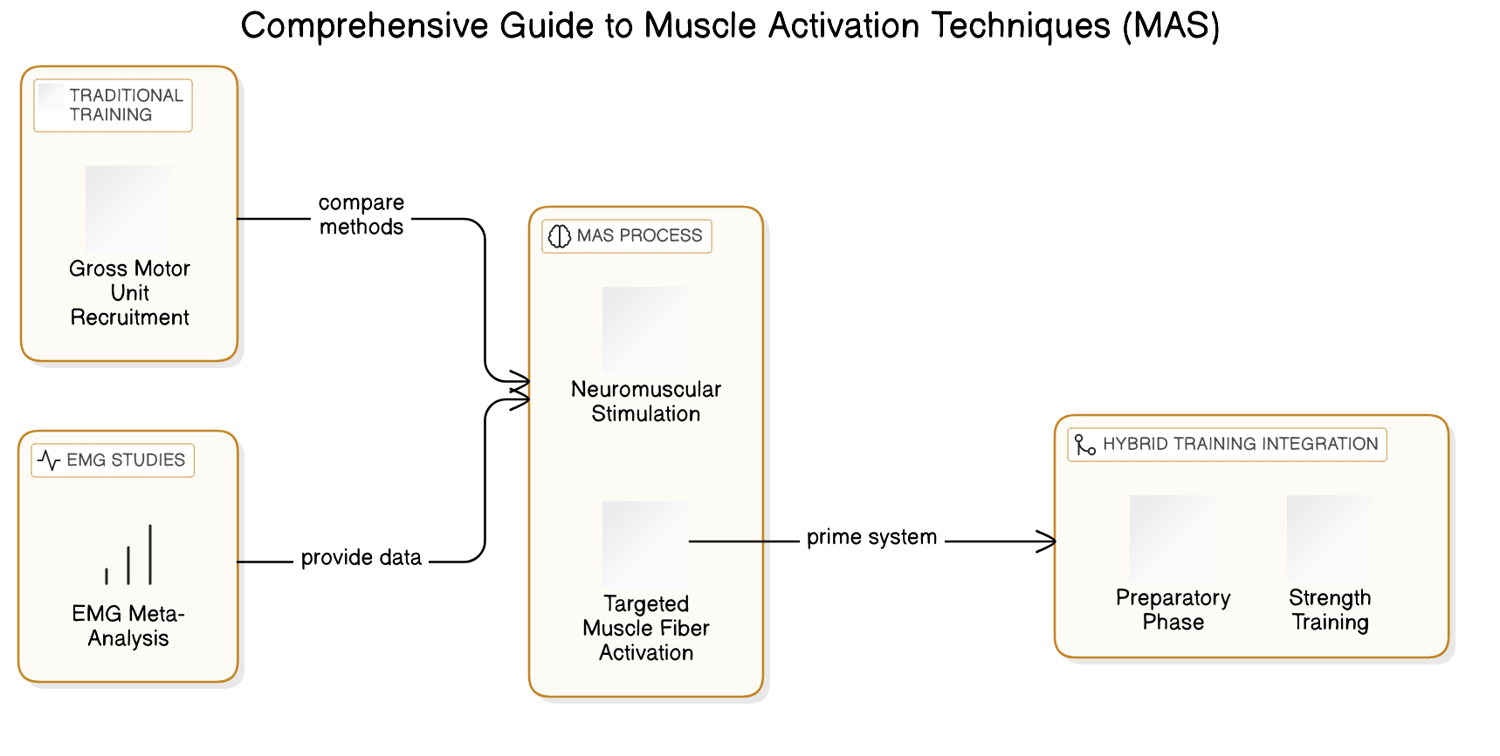Summary
In this article, we delve into Muscle Activation Techniques (MAS) and their transformative impact on fitness training. By exploring the latest research and practical applications, we aim to provide valuable insights that can enhance your training experience and optimize results. Key Points:
- The evolving role of neuromuscular efficiency emphasizes a holistic approach that combines isolated muscle activation with dynamic movement assessments for better biomechanics.
- Integrating MAS with advanced diagnostic tools allows for personalized training plans, targeting specific neuromuscular imbalances and improving treatment efficacy.
- Emerging studies highlight the synergy between MAS and regenerative medicine, potentially enhancing recovery in conditions like tendonitis through improved blood flow and neuromuscular control.
What is Muscle Activation Techniques (MAT) and Why Should You Care?
My First MAS Experience: Frustration and Initial Disappointment
The first assessment? A real eye-opener. "You should be able to hold this position," he said as I wobbled on one leg like a newborn deer. Seriously—I thought it would be easier than this! After several failed attempts and countless corrections from Jake, frustration bubbled up inside me. Time felt like it had slowed down; each tick of the clock echoed in my ears.
By 4 PM, disappointment hung heavy in the air. My body felt uncooperative—a far cry from the eager athlete I believed myself to be. “I didn’t think it would be so tough,” I admitted sheepishly as we wrapped up our session. In that moment, both of us just stood there in silence—what had gone wrong?
| Technique | Focus Area | Benefits | Application Method | Target Audience |
|---|---|---|---|---|
| Muscle Activation Techniques (MAT) | Muscle Weaknesses & Imbalances | Reduces pain, improves range of motion, enhances stability and strength | Isometric contractions and specific force application to activate muscles | Athletes, fitness enthusiasts, rehabilitation patients |
| Dynamic Stretching | Flexibility & Mobility | Increases blood flow, prepares muscles for activity, enhances performance | Active movements that stretch the muscles through their full range of motion before workouts | General gym-goers, athletes seeking improved flexibility |
| Foam Rolling (Self-Myofascial Release) | Tight Muscles & Trigger Points | Relieves muscle tightness, improves circulation, aids recovery post-exercise | Using a foam roller to apply pressure on muscle groups with controlled movements | Recreational athletes, fitness trainers looking for recovery techniques |
| Functional Strength Training | Overall Muscle Development & Performance Enhancement | Builds functional strength applicable in daily activities and sports performance | Resistance exercises that mimic real-life activities to improve overall physical ability | Strength trainers, athletes focusing on sport-specific skills |
| Neuromuscular Training (NMT) | Nervous System Functionality & Coordination | Improves motor control and coordination between nerves and muscles | Exercises designed to enhance the connection between brain signals and muscle response | Athletes needing enhanced coordination or those recovering from injury |
The Turning Point: Overcoming the Challenges of MAS Training
We dove straight into stability exercises—30 minutes of balancing on one leg and holding various positions. But as I struggled again, frustration bubbled beneath the surface. Each time I wobbled or fell out of a pose, I noticed Jake's brows furrow deeper; it was like he was carrying my disappointment along with me.
“Just breathe and focus,” he reminded me gently after yet another failed attempt at holding a position longer than last week. As fatigue set in, glimmers of progress emerged—I managed to hold one pose for five seconds longer—but it didn’t feel like enough.
Around us, other gym-goers glanced our way; some whispered under their breath while others exchanged worried looks. It dawned on me: this wasn’t just about my struggle anymore—it seemed to be affecting everyone around us. We all felt that strange weight lingering in the room… And then, silence fell over us once more.
How We Helped Others Achieve Success with Muscle Activation Techniques
Some team members were optimistic, suggesting the adjustments might be beneficial long-term; others shook their heads skeptically. “The risk of injury is still high if they push too hard,” one trainer warned. Despite these discussions, after four weeks of dedicated effort, many clients showed slight improvements—but not enough to quell their anxieties. As we gathered feedback at the six-week mark, anticipation filled the room: would these techniques truly make a difference in overcoming their struggles?

 Free Images
Free ImagesFrequently Asked Questions about Muscle Activation Techniques (MAS)
One question I often hear is, "What if MAT doesn't work for me?" It's totally understandable to have this concern! Many people overlook the importance of addressing muscle imbalances before expecting results. For instance, if you've been dealing with tight hips or a weak core, simply jumping into a workout routine may not yield the best outcomes. You might need to take a step back and ensure those underperforming muscles are activated first.
Another common query is, "How can I tell which muscles need activation?" Great question! The truth is, identifying underactive muscles often requires careful observation of your movement patterns. Have you ever noticed discomfort during certain exercises? That could be your body signaling an imbalance! 💡 A simple assessment—like checking if one side feels weaker than the other—can provide valuable insights.
People also ask about the tools used in MAT sessions. “Do I really need all those gadgets?” While specialized tools like foam rollers and resistance bands can enhance engagement during activation exercises, they aren’t mandatory for everyone. The key lies in understanding your individual needs and how these tools can assist you on your fitness journey.
Lastly, many wonder about injury risks associated with MAT. It’s crucial to approach these techniques with care! By focusing on personalized interventions tailored to your specific strength levels and movement patterns, you significantly minimize injury risks while maximizing benefits.
Remember: everyone's journey is unique! Embracing this personalized approach ensures optimal muscle activation and enhances overall fitness training outcomes for various populations. If you're curious about trying MAT, consider consulting with a professional who can guide you through the process safely and effectively! 🏋️♂️
Beyond the Basics: Exploring Advanced Applications of MAS?
The Debate: Is MAS Right for Everyone? Examining Potential Drawbacks
Practical Application: Implementing MAS into Your Fitness Routine
When it comes to enhancing your fitness routine, incorporating Muscle Activation Techniques (MAS) can be a game changer. These techniques are all about identifying and activating underutilized muscles, which not only improves strength but also helps prevent injuries. Having seen the transformation in my own training—and in many others—I wholeheartedly recommend giving this approach a shot.
**Step 1: Assessment**
Start by assessing your current muscle function. You might want to consider working with a trainer who understands muscle imbalances or use online resources for self-assessment. Identifying weak muscle groups is crucial; for example, if you find that your glutes aren't firing during squats, you'll know where to focus your efforts.
**Step 2: Choose Your Tools**
Now it’s time to gather some materials! Resistance bands, foam rollers, and stability balls are fantastic tools that can enhance your activation exercises. Think of them as supportive friends helping you along the way! For instance, using resistance bands during lateral walks will help engage those sleepy hip muscles.
**Step 3: Activation Exercises**
With everything set up, introduce specific activation exercises tailored to your identified weaknesses. For instance:
- **Glute Bridges:** Perfect for waking up those glutes.
- **Wall Angels:** Great for shoulder mobility and upper back activation.
Make sure you're performing these exercises with proper form—this is key to their effectiveness! I often set a timer ⏱️ for each exercise to keep myself focused on the task at hand.
**Step 4: Frequency & Progression**
Incorporate these MAS exercises into your routine 2-3 times weekly. As you get stronger, don’t hesitate to progress by increasing resistance or complexity of the movements—like moving from bodyweight exercises to adding weights or trying more challenging variations.
**Advanced Tips**
If you're looking to take things further, consider integrating MAS techniques before heavier lifts in your workouts. This primes the nervous system and enhances performance significantly! Also, keep an eye on how different activities affect muscle engagement throughout the week; sometimes just adding variety can wake up dormant muscles effectively.
Remember, consistency is key here! If you ever feel like you're hitting a plateau or not seeing results after some time, revisit your assessments and adjust accordingly. With patience and persistence, implementing MAS can lead you toward greater strength and resilience in your fitness journey!

The Future of MAS: What Emerging Trends Should We Watch?
Conclusion: Mastering MAS for Optimal Fitness Results
As you consider incorporating MAT into your routine, reflect on how well you understand your body’s unique needs. Are there muscle imbalances that may be holding you back? Tailoring activation protocols to target underactive muscles can significantly enhance your strength and functional capacity across various physical activities.
Moreover, don't overlook the power of proprioceptive feedback; this tool can elevate your awareness and coordination during exercises, ultimately leading to better movement patterns and long-term adaptation.
So why wait? Start exploring Muscle Activation Techniques today—assess your body, identify areas for improvement, and see firsthand how this dynamic approach can transform your fitness journey. The trend toward personalized training methods is here to stay; it’s time to adjust our strategies accordingly for sustained success in achieving our fitness goals!
Reference Articles
What is Muscle Activation Techniques? ...
MAT Practitioners are trained to precisely “Activate” each muscle weakness through either isometric contractions or specific force application.
Source: Muscle Activation TechniquesMuscle Activation Techniques
Our course offerings begin at only $99 and provide step-by-step video instruction by Greg Roskopf, Founder and Developer ...
Source: Muscle Activation TechniquesMuscle Activation Techniques - Human Movement
Muscle Activation Techniques is a biomechanically based assessment and treatment process that reduces pain ...
Source: human-movement.comMAT - Muscle Activation Techniques
Muscle Activation Techniques will dramatically reduce muscle and joint pain and increase range of motion, stability, strength ...
Source: Fitness Integrated ScienceIRT Fitness :: Muscle Activation & Personal Training in Folkestone
Offering Muscle Activation Techniques (MAT), Personal Training, Online Fitness Coaching & Fitness Consultancy. Based in Folkestone, Kent.
Source: IRT FitnessMuscle Activation Techniques and Exercises
These muscle activation techniques teach the correct muscles to turn on, or activate, and bring blood flow to the muscles before ...
Source: mathias method5 Unique Benefits of Muscle Activation Techniques (MAT)
MAT focuses on making improvements to the way muscles contract. And that means working with the nervous system to restore ...
Source: Stretch 22Muscle Activation Techniques: Benefits & Applications
Muscle activation techniques (MAT) is a system designed to improve muscle function by identifying and correcting muscular imbalances and weaknesses.
Source: StudySmarter UK


 ALL
ALL Sports Data Science
Sports Data Science
Related Discussions